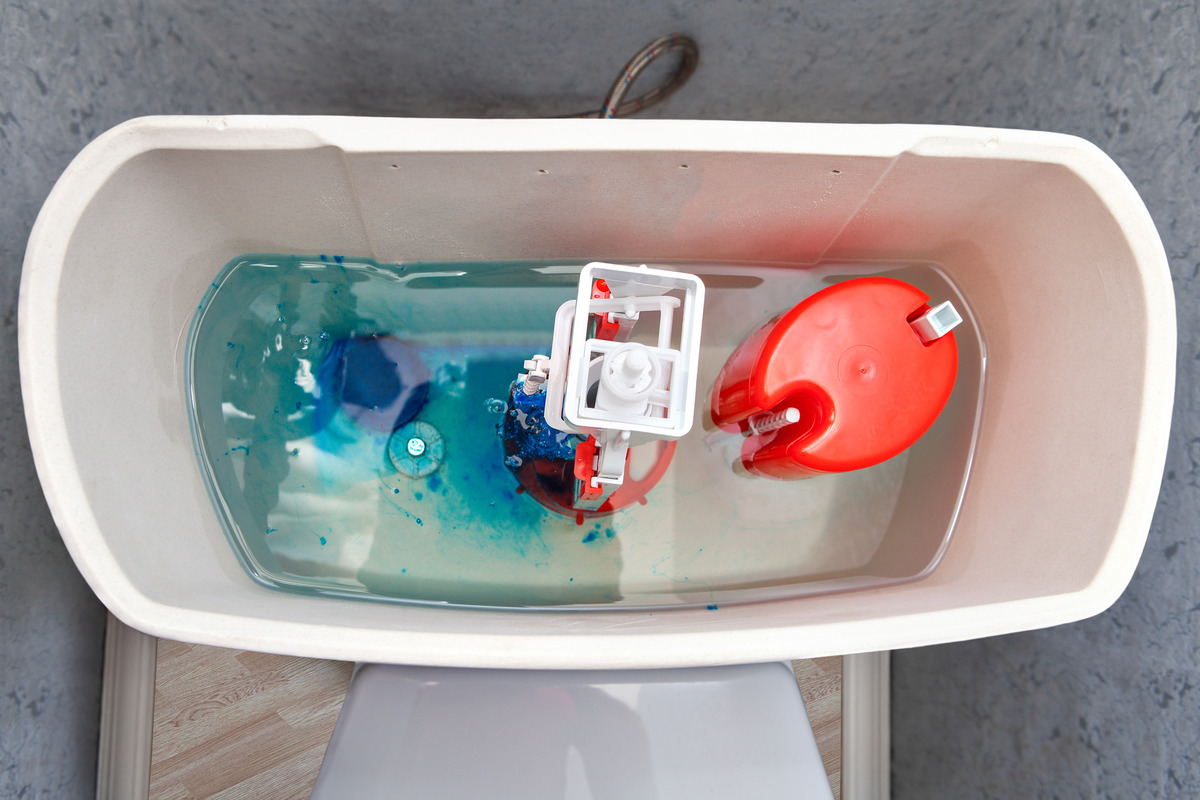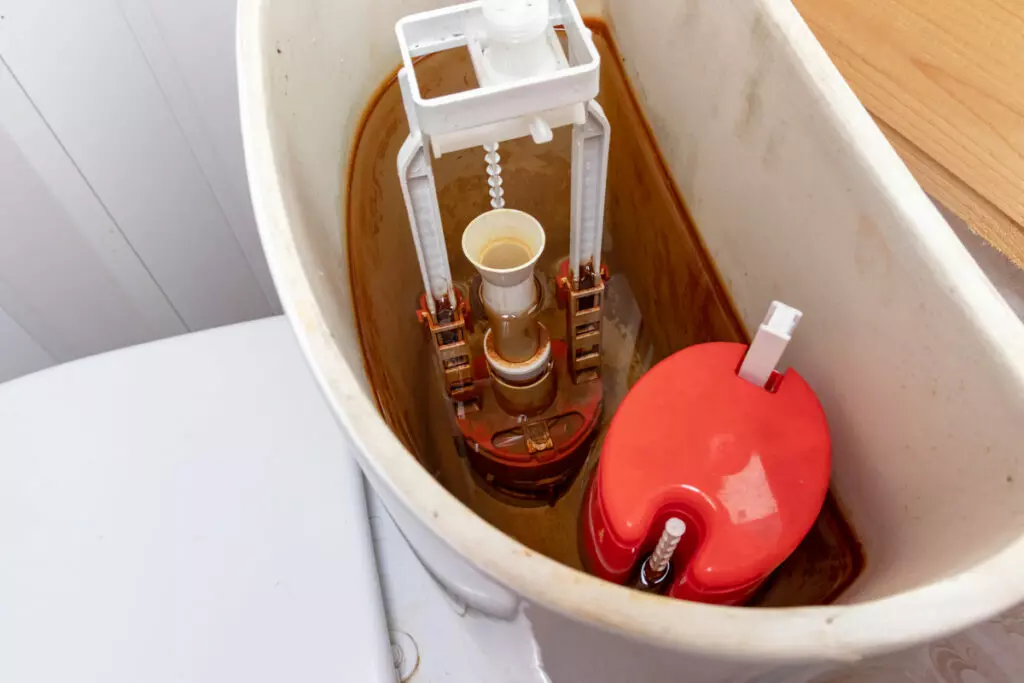Keep Your Bathroom Clean by Learning How to Clean a Toilet Tank

Cleaning your toilet doesn’t end when you pour your cleaning products into the bowl. You also need to take good care of your toilet tank.
Keeping your toilet tank clean means controlling the build-up of debris, mineral deposits, bacteria, and mold growth. If you aren’t careful, these can eventually cause corrosion or rust on the steel elements inside the toilet’s tank.
When this happens, you have three choices: fix it, buy another toilet tank, or deal with dirty water when you flush.
Learn how to clean a toilet tank through our complete guide grounded on experience and research. What are you waiting for? Scroll through!
Why Regular Cleaning of Toilet Tank is Important
The smell and bacteria growing in an unclean toilet tank are reasons enough to clean it regularly.
More than hygiene, cleaning it regularly has implications on the life span of your toilet parts. It’s even beneficial when it comes to economics.
The cleaner your toilet tank is, the longer you can maintain its quality, and the less you’ll need to shell out for repair or replacement.
Learn in-depth how maintenance, hygiene, and economic benefits are achieved when regularly cleaning your toilet tank below.
-Maintenance of Toilet Parts:
One of the essential benefits of maintaining the cleanliness of the entire toilet is maintaining its quality, ensuring it functions like new for years to come.
You’ll enjoy its premium efficiency without suffering from rust and dirt build-up issues.
This is vital as frequent use of toilet tanks can lead to accumulated stains and bacteria. It can attract mold or mildew due to the dampness.
When these things consume your toilet tank, you’re left with a smelly, dysfunctional, and dirty tushy tower. When not taken care of, you’ll be welcomed by unpleasant odors and dirty water the moment you open the tank lid.
– Hygiene and Cleanliness:
The most essential benefit is improved hygiene and cleanliness. As mentioned, your toilet tank will eventually get dirty over time. Iron, manganese, and debris from the water and other parts inside of the tank will accrue.
Dirty tanks can transmit bacteria into the bathroom environment, and who will get infected by these? You and your family! That’s what makes cleaning worth the hassle.
– Economic Benefits:
When you clean your toilet tank regularly, it’s not just your physical health that will reap the rewards, as your financial health will also prosper.
A well-maintained toilet tank will save you from expensive maintenance services and plumbing costs. It even saves you from having to buy a new toilet tank.
Step-by-Step Guide: How to Clean a Toilet Tank
Since we’ve settled that toilet tank cleaning is important, let’s discuss HOW to clean it through this step-by-step guide.
Preparation: Turning off the Water and Draining the Tank
First, you must turn off the water valve (overflow valve) and drain the tank. It’s located at the bottom part when following the water line.
Once the water flow stops, follow these steps:
- Remove the tank lid.
- Flush the toilet with approximately two or three flushes until it drains completely, and you empty the tank. You can also leave a small amount to mix with the white vinegar cleaning solution.
To integrate this process into your cost-efficient housekeeping measures, you can clean and wipe the toilet bowl while flushing the toilet.
Step One: Application of Appropriate Cleaning Substance
Step one involves choosing the right cleaning substance. But what are these appropriate cleaning substances?
Here’s a list of essentials that can help clean your tank’s walls, lid, top rim, ball float, flapper, chain, and other metal parts:
- White vinegar
- Disinfectant cleaner spray to start cleaning
- Long-handled scrub brush cleaner or sponge for scrubbing
In applying the white vinegar, you could mix it with warm water or whatever’s left inside the tank. The most crucial aspect here is to pour white vinegar (or a vinegar mixture) and let it sit overnight to remove mineral deposits.
After you let the mixture sit, flush the toilet tank. Empty the tank thoroughly. Then, apply the disinfectant cleaner and scrub the tank’s walls using the long-handled scrub brush.
PRO TIP: Always wear natural rubber gloves when you clean, spray, and wipe any parts of the tank for your safety.
Step Two: Scrubbing and Soaking Process
As mentioned previously, scrubbing and soaking are the processes you should take advantage of, as they can help remove mineral deposits and dirt in the toilet tank.
Here are the steps you can take:
- Soak with white vinegar overnight.
- Flush the tank full of vinegar cleaner.
- Apply disinfectant cleaner/commercial cleaners using an all-purpose spray bottle
- Clean the bathroom toilet tank fully using a scrub brush cleaner.
- Repeat if needed
Step Three: Rinse and Refill
After performing the steps above, rinse and refill your tank. You must turn on the water valve at the toilet’s base to do this. Wait until the reservoir is full of water. Then, you must flush the toilet until the water comes out clear.
Again, you can use this flushing time to clean your toilet bowl and use the water efficiently.
Comprehensive Cleaning Process: Choosing the Right Cleaning Substance
There are A LOT of cleaning solutions available for your toilet tank. Choosing the suitable cleaning substance for your needs can thus pose quite a challenge for obvious reasons.
In this section, we’ll help you narrow your choices by showing you the benefits, procedures, pros, cons, guidelines, and other information you need to know when using vinegar, bleach, and other cleaning substances.
Using Vinegar: Benefits and Procedures
Vinegar is often the most used cleaning substance for the following reasons:
- Easy to use
- Cleans the toilet tank of mineral deposits
- Eco-friendly option
You simply have to fill the tank up to the overflow tube with vinegar and let it sit for at least two hours or even overnight. You can flush the toilet the next day to remove the vinegar.
Using Bleach: Pros, Cons and Guidelines
Bleach can remove dirt. It’s also easy to apply. More than that, it can kill bacteria and viruses that cause infections.
However, its most apparent con is that it triggers rust in the toilet tank and its metal parts, which defeats the maintenance, health, and economic benefits of regularly cleaning your toilet tank.
As effective as it is, DON’T USE BLEACH when cleaning tanks.
Other Options: Lemon Essential Oil and Bleach-Free Disinfectants
You can use other options for your bathroom cleaning tasks, like lemon essential oil and bleach-free disinfectant cleaner (i.e., baking soda, wet pumice stone, hydrogen peroxide).
Lemon essential oil is an excellent replacement for white vinegar, especially since the latter has a solid putrid smell. On the other hand, you can use baking soda and wet pumice stone, as these are safe for humans and rust-free.
Poorly Cleaned Toilet Tank: Problems You May Encounter
A poorly cleaned toilet tank will result in mildew, mold, discoloration, dirt build-up, and mineral buildup. Learn just what these problems entail in this section.
– Mildew and Mold Problems:
Mildew and mold problems can trigger your allergies and cause headaches, breathing problems, and even cause fatigue and lethargy.
– Discoloration of Toilet Tank:
Discoloration can be caused by mold or rust. Regardless of its roots, discoloration depletes the visual appeal of your toilet and even puts your health at risk, specifically for those with pre-existing allergies and lung conditions.

– Build-up of Dirt and Grime:
The buildup of dirt and grime will dirty your toilet environment, as it can be transferred into the water you flush. This buildup results in skin infections, respiratory problems, and other adverse health implications.
Practical Tips To Keep Your Toilet Tank Clean
You may already know how to clean your toilet tank, but here are more tips to keep your toilet squeaky clean!
– Frequent Light Cleaning vs. Occasional Heavy Duty Cleaning:
You have two options when it comes to cleaning: frequent cleaning (light) or occasional heavy-duty cleaning.
On the one hand, frequent light cleaning entails expensive cleaning costs. On the flip side, occasional but heavy-duty cleaning will ensure that your toilet tank is clean for a long time with little adverse economic impact.
– Cleaning Best Practices:
Aside from making a comprehensive bathroom cleaning checklist, here are a few more tips you can follow to clean your toilet tank:
- Try using tank tablets. Tank tablets are best for maintenance, as they help lessen your cleaning time and maximize occasional heavy-duty cleaning sessions.
- Bleach-free products are the best things to incorporate into your cleaning sessions. It’s beneficial for you and your toilet tanks.
- Always use gloves when cleaning your toilet. You can also use goggles and masks to avoid stinging chemicals.
– When to Consider Professional Cleaning Services:
You should consider a professional cleaning service in Boston when your toilet tank has the following characteristics:
- Greatly affected by molds and rust
- Hard water stains
- Flushed water is still not clean despite extensive cleaning
Frequently Asked Questions
We answered some of your FAQs in this section. Read on!
How Often Should One Clean a Toilet Tank?
The frequency of cleaning a toilet tank when using vinegar and scrub is once or twice a year.
Do I Need Special Tools to Clean a Toilet Tank?
You will need tools to clean your tank, but they’re nothing too special.
These tools are rubber gloves, a scrub brush or toilet brush, and a spray bottle (optional) for lemon essential oil and other disinfectants.
Can I Use Any Substance to Clean the Toilet Tank?
No, you can’t just use any substance to clean the toilet tank.
Ensure that what you’re using is bleach-free and safe for metal parts.
Can a Poorly Cleaned Toilet Tank Cause Health Issues?
Yes, it can cause health issues.
Some issues are extreme allergic reactions, breathing problems, and headaches.
Is Professional Cleaning Necessary for Maintaining a Clean Toilet Tank?
Yes, a professional cleaner is necessary if your toilet tank has hard water stains, rust, or hard water deposits.
Conclusion
Cleaning a bathroom toilet tank is simple: turn off the water valve, drain, fill the tank with vinegar, sit overnight, drain, put cleaning products, scrub, rinse, and fill it once more!
Since it’s easy to do, there’s no excuse for you to skip this process. After all, you will benefit from it regarding aspects like cleanliness, toilet appearance, and saving money.
Written by
Maria DeSouza

Maria De Souza is a committed and accomplished entrepreneur in the cleaning industry, possessing an extraordinary blend of leadership, vision, and knowledge. As the proud owner of Onix Cleaning Services in Boston, Massachusetts, Maria has over two decades of experience in the industry, delivering unparalleled service and maintaining the highest standards of cleanliness.

